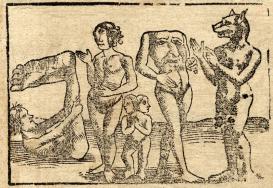Translation is an intellectual product that is as much determined by its past in the source domain as it is shaped by its future in the target domain. In this project, I seek to explain the cultural and epistemic factors of learning through translation, using the example of the unstudied translational legacy of Sebastian Münster (1489–1552). Münster’s Cosmographia (1544), after going through many editions, became the normative standard for geographical and anthropological accounts and was translated into five languages. My project analyzes his translational legacy on several levels:
- Münster’s comments on Biblical texts in the context of premodern views on translatability
- Translated compilations in Cosmographia from classical authors and contemporary treatises on remote lands, such as Muscovy and India
- How Münster’s publications were themselves translated from German into Latin, English, French, Italian, and Bohemian
- Münster’s contribution to ensuring translatability between narrative descriptions and mathematical projections, and how this affected further scientific translations.
The project aims to reconstruct Münster’s translational legacy as a complex endeavor in the transfer of natural and anthropological knowledge between languages and media, in order to clarify the relationship between translatability and innovation. The project is funded by the DFG (German Research Foundation) Priority Programme 2130, “Early Modern Translation Cultures (1450–1800).”

